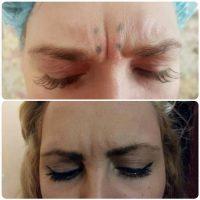Does Botox Work On Deep Wrinkles?
Botox effective for smoothing deep facial wrinkles
Botox injections are very safe and effective for smoothing of lines caused by contraction of facial muscles. Areas which benefit most from Botox are the frown, forehead, and crows feet. I also find that Botox can help with fine vertical lines at the upper and/or lower lips, particularly when used in combination with a hyaluronic acid filler such as Juvederm or Restylane.
The effects of Botox last from three to four months, and improvement begins several days after injections are performed.
Botox is not useful for correction of overall facial wrinking or fine lines, which may require some form of skin resurfacing such as laser or peel. (Pamela B. Rosen, MD, Coral Springs Plastic Surgeon)
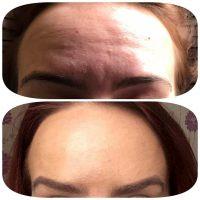
Botox May Not Be As Effective As It Is For Younger Individuals
Where does Botox Work?
Botox works to relax muscles by blocking the nerve signal to the muscle. Therefore, it works on lines caused by muscle movement (dynamic wrinkles). These areas incluse frown lines on the nose and between the eyebrows, Crow’s feet, some neck wrinkles, and also, some chin, base of nose and lower jaw wrinkling.
Botox can be used in combination with injectable fillers, if deep lines persist after relaxation (static wrinkles). Other treatment choices include topical retinoids, Kinerase, microdermabrasion, chemical peels, IPL and laser treatment. (Karen Vaniver, MD, Kennewick Plastic Surgeon)
Botox is great for some wrinkles
Botox is very good for forehead wrinkles. It has been tried in other areas with varying degrees of success. The underlying principle of Botox is that it is a neuromodulator and weakens the underlying muscle.
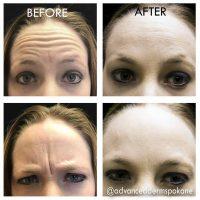
Botox Work On Deep Forehead Wrinkles
This smoothes out the appearance of the overlying skin. Therefore in areas where the rhytids are not caused by the tension of the underlying muscle, the benefits may not be as profound. (Robert Mounsey, MD, Toronto Facial Plastic Surgeon)
Botox best for certain wrinkles
Botox works incredibly well for wrinkles of the glabella (frown lines between the eyes), forehead, and crow’s feet. It can also work for specific dynamic wrinkles (wrinkles of facial motion) of the nose (bunny lines) and around the mouth.
It does not, however, work for static wrinkles (wrinkles at rest), for deep folds of the lower face, or for volumizing cheeks or temples. This is where facial fillers come in.
Botox works well together with various facial fillers to help begin to achieve minimally invasive facial rejuvenation. (Chad L. Prather, MD, Baton Rouge Dermatologic Surgeon)
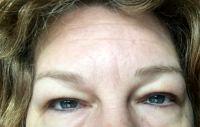
Does Botox Work On Forehead Wrinkles
Botox works best in wrinkles caused by muscular contractions.
Botox works best in wrinkles caused by muscular contractions. These especially include the forehead, upper nose, crow’s feet, upper lip, chin, and neck. Wrinkles caused by loss of tissue, like smile lines, respond best to wrinkle fillers. (William P. Coleman III, MD, Metairie Dermatologic Surgeon)
Botox for deep facial wrinkkles
Botox works on wrinkles that are caused by muscle movement. It is excellent for reducing wrinkles in the glabellar area, forehead and crows feet. It can also reduce wrinkles in the neck area, around the mouth and chin area.
It is important to have an experienced surgeon perform the botox injections. (David Freilich, MD, Englewood Oculoplastic Surgeon)
Botox works by blocking the activity of certain muscles that cause unwanted wrinkles – most often the frown lines, crow’s feet, and forehead lines. Other areas can be carefully treated, but essential muscles must be protected to allow normal smile and speech, for example.
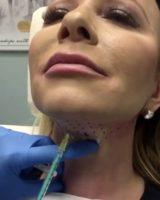
Does Botox Work On Neck Wrinkles
There may be other lines on the face where the skin just folds on itself, such as the folds between the nose and corner of the mouth, or wrinkles from sun damage or ageing, such as those below the eyes, that cannot be treated with Botox because they are not caused by muscle activity. (Randy J. Buckspan, MD, Austin Plastic Surgeon)
Botox For the Eyes, Forehead, Mouth
Botox or Dysport are essentially purified botiulinum toxin which when injected into certain muscles relaxes those musles so lines on the face become less prominent. In my practice, the most popular areas for placement include the crow’s feet lines, frown lines (aka #11s), forehead lines, corners of the mouth, and underarms for sweating.
Lines can also be addressed with modalities such as lasers (I use the Mixto SX microfractional CO2 laser), radiofrequency (I use Pelleve’), and fillers such as Radiesse, Sculprtra, Restylan, and Juvederm.
The key is to find a physician who has experience and takes the time to educate you properly about your options and performs these procedures to your satisfaction. (Amiya Prasad, MD, New York Oculoplastic Surgeon)
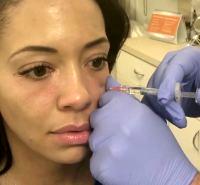
Does Botox Work On Wrinkles Under Eyes
Botox limits
Botox allows the 4-5 month deactivation / “taking out” of certain parts of facial muscles. If the injector is a Plastic Surgeon with a good understanding of facial anatomy, he/she can bring about BOTH smoothing of active wrinkles as well as noninvasive / nonsurgical lifting of the droopy brows and corners of the mouth.
Botox enables smoothing of forehead, bridge of nose (between the brows / glabellar)n crow’s feet lines. It allows the lifting of the inner and outer parts of the brows and of droopy corners of the mouth.
To get a great result insist on having your treatment done by a Board Certified Plastic Surgeon or Dermatologist. (Peter A. Aldea, MD, Memphis Plastic Surgeon)
Botox works for dynamic wrinkles
Botox works for wrinkles that are created by the contraction of the muscle beneath the wrinkle or what we call “dynamic wrinkles.” The most common ones in the face are the lines between our eyebrows, our forehead lines and our crows feet. (Paul Blair, MD, Hurricane Facial Plastic Surgeon)
Botox works well in many areas
Botox works well in many areas of the face for facial rhytids (wrinkles) and this includes the area between the brows (the only FDA approved area), forehead lines, crow’s feet, and bunny lines of the nose.
You can also used for wrinkles around the mouth, downward turn corners of the mouth, a gummy smile, and platysmal banding around the neck. (Vincent N. Zubowicz, MD, Atlanta Plastic Surgeon)
Areas Botox Works
Botox is an excellent treatment for wrinkles caused by contraction of facial muscles. The most common areas for Botox are between the eyebrows (the glabella, or the frown lines), the forehead, and the crowsfeet (smile or squinting lines outside the eyes).
While the only FDA approved area is between the eyebrows, the other areas mentioned have effective results when performed by an experienced practitioner. There are many other areas of the face that can be injected, but be very careful as unwanted side effects can occur.
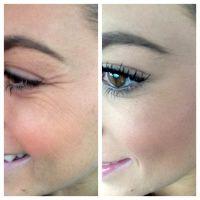
Botox Is Safe To Use Long Term
For example, over-aggressive injection around the mouth can cause difficulty pronunciating certain words. The most important step is researching your provider and making sure they are experienced. The results can be remarkable! (Scott J. Engel, MD, FACS, Sarasota Plastic Surgeon)
Botox is best for wrinkles caused by muscle movement
Lines and wrinkles are caused by various factors. Some are caused by volume loss and loose skin, which are due to normal aging as well as sun exposure. Other lines are caused by normal facial muscle contraction associated with facial expression.
An example of these lines are the “11’s” between your eyebrows and crow’s feet around the eyes.
These lines, associated with muscle contraction, are the best ones to be treated with Botox. (Joshua Zeichner, MD, Manhattan Dermatologist)
Botulinum toxin works best for certain wrinkles and less well for others. On some it has virtually no effect. There is a point of diminishing returns. The problem is that exactly which wrinkles are best or “off limits” is a matter of opinion.
Find a good treating doctor and stick with him or her. (John P. Di Saia, MD, Orange Plastic Surgeon)
Botox treats wrinkles caused by repeated facial contractions
Botox is a muscle relaxant that is very usuefull in treating wrinkles that are caused by repeated muscle contractions involved in facial expression. The most common areas are around the eyes, forehead and between the brows. (Thomas Buonassisi, MD, Vancouver Facial Plastic Surgeon)
Botox helps “dynamic” wrinkles
Botox is useful for dynamic wrinkles (i.e. wrinkles that worsen with facial movement). These include the vertical glabellar wrinkles (between the eyes) for which Botox is FDA-approved, horizontal forehead wrinkles, and the crows’ feet.
Static wrinkles (wrinkles that occur at rest) may also be treated with an injectable filler, such as Restylane, Juvederm, or Perlane. (Ronald Friedman, MD, Plano Plastic Surgeon)
